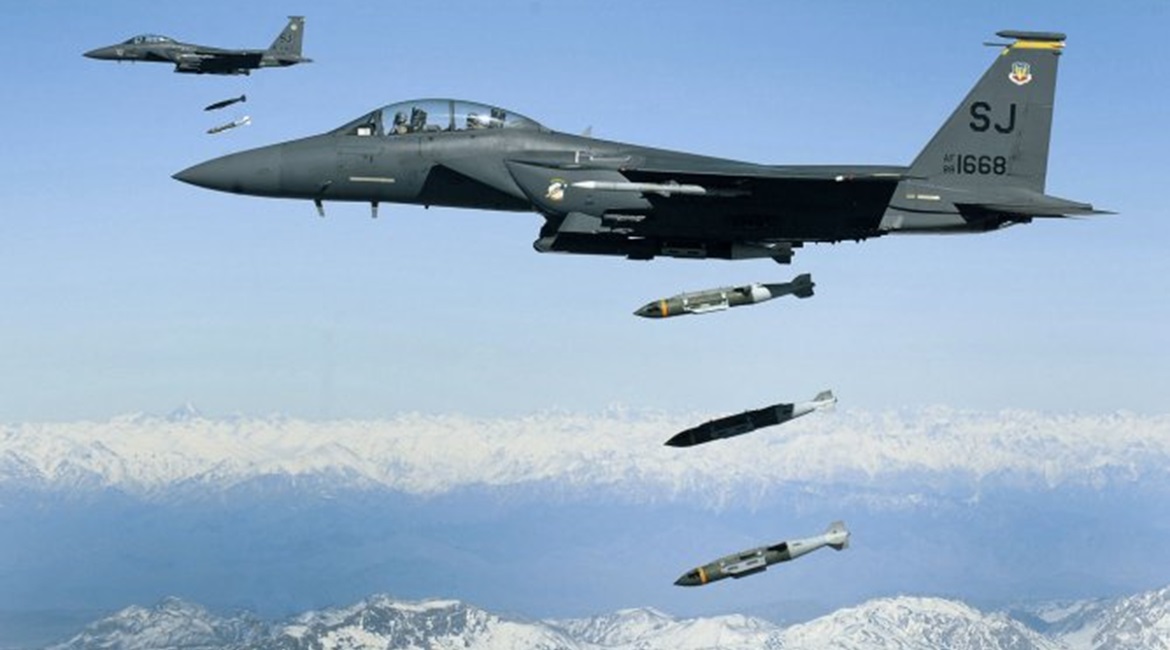
The US military noted a sharp reduction in the number of munitions employed in Afghanistan during November although numbers remain historically high, figures released by Air Force Central Command (AFCENT) show.

USAF F-15E Strike Eagles dropping munitions on Afghanistan at the height of the conflict some years ago. The US military has noted a reduction in the number of airstrikes for November, although the number remains historically high. (US Air Force)
According to the Combined Forces Air Component Commander (CFACC) 2013–2019 Airpower Statistics released for November, 519 missions flown in Afghanistan during that month resulted in weapons being released, although the numbers to do not note the numbers or types of weapons released during each sortie. This compared to 777 for the previous month and 948 for September, the most active month this year.
While airstrikes have traditionally tailed-off from November through to the re-commencement of the Afghan ‘fighting season’ in April, in November 2018 airstrikes actually rose compared to the previous month – from 769 to 841. The reduction this year brings 2019 into roughly the same pattern as every year since records were first published in 2009.
That said, despite the reduction the number of airstrikes for November, this year is currently the second highest on record. Even with the year not yet complete, 2019 is on course to be one of the most active years for US and coalition aircraft in Afghanistan in the last decade with 6,727 strike sorties so far recorded. Oonly 2018 recorded more with 7,362, and there would need to be 635 or more airstrikes in December to beat this figure. Indeed, the downward trajectory for November suggests that there will be less than the 539 recorded for December 2018.
Looking to read the full article?
Gain unlimited access to Janes news and more...




